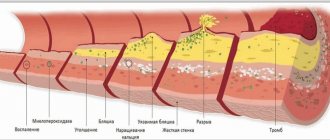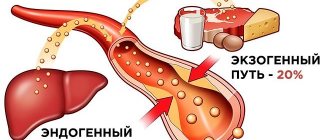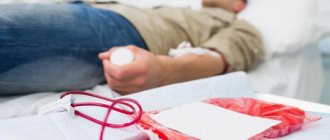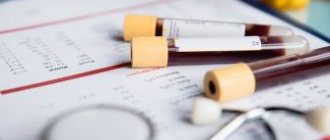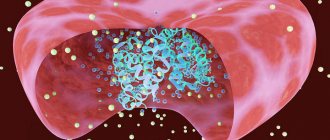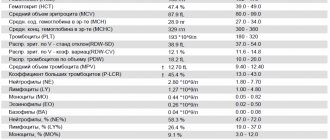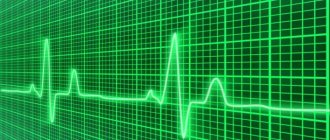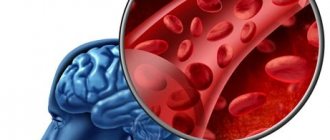Cholesterol: what is it?
Cholesterol in women and men is found in cell membranes. The consistency of cholesterol is similar to wax; in composition it is a fat-like sterol. The substance is involved in metabolic processes - without it, vitamin D, some enzymes and hormones cannot be produced.
Most cholesterol is found in the brain and liver. Gallstones are also made of cholesterol. The name of this substance - cholesterol - is literally translated from Greek as “hard bile”.
The human body produces approximately three-quarters of cholesterol on its own; as is known, the process of cell renewal in it is not interrupted until death or old age, only slowing down significantly. The liver is the main “factory” for the production of cholesterol.
Cholesterol is produced not only by the intestines (which is common knowledge), but also by skin cells.
But when they talk about the dangers of cholesterol, they most often mean the part that enters the body with food. Although, even in the academic scientific community, there is still no consensus on its digestibility. Many believe that it is poorly absorbed from food by the intestines, so it has very little effect cholesterol content in the blood
There are 2 types of cholesterol. The first, LDL, is called low-density lipoprotein. The name introduced by nutritionists is bad cholesterol. It is a “building material” for atherosclerotic plaques, which clog arteries and cause diseases of the cardiovascular system.
The second, good type, high-density lipoproteins (HDL), prevents the occurrence of plaques, heals blood vessels and reduces the risk of related diseases. It removes LDL from the blood, taking it with it on its way to the liver. The liver processes LDL and removes it from the body. The amount of good cholesterol in the blood is an important factor for human health. HDL is produced by the body and comes from food.
HDL and LDL substances, which have “oily” properties, are insoluble in the blood, so lipoproteins are used to transport them, a kind of two-layer “containers”, the outer side of which is protein, the inner side is lipid. Blood is a “water” solution.
You cannot simplify the model to the formula “the more good cholesterol and the less bad, the better.” It is important to maintain a balance in the levels of all lipoproteins.
causes of cholesterol
Drug treatment of hypercholesterolemia and atherosclerosis
Drug treatment should be prescribed by a doctor depending on your individual blood plasma lipid profile, your concomitant diseases: liver disease, whether you have diabetes or hypertension, etc. You should not take medications on the advice of relatives, friends and acquaintances. If a certain drug helped your neighbor, this does not mean that it will help you. Because you have a unique body, your own course of the disease and your own concomitant diseases. However, drug therapy can be described in general principles, without specifying the names of the drugs. (I will not engage in advertising of individual medications).
A universal remedy for lowering cholesterol and normalizing lipid status does not yet exist. Two main groups can be distinguished: drugs that reduce cholesterol and drugs that reduce triglyceride levels. In recent years, so-called fibrates and statins have been increasingly used. They mainly inhibit the synthesis of hepatic cholesterol. Thus, affecting the liver, which in some cases even leads to toxic effects on the liver. However, the pharmaceutical industry does not stand still, and new statins are emerging that do not have a toxic effect on the liver. And when using statins, of course you need to follow a diet, because 30 - 35% of cholesterol comes from food. Statins improve endothelial function and act on atherosclerotic plaque (Boneti PO et al. Europ.Heart J., 2003). Another number of difficulties that do not lead to the widespread use of these drugs is that they are expensive and act for the period of use. And it is necessary to take these drugs almost for life. This may result in some effects on liver function and, in rare cases, toxicity from statin use. In the absence of effects from the treatment, plasmapheresis has been performed in recent decades. In some cases, surgical treatment.
Cholesterol: main functions
Cholesterol is a substance without which normal metabolic processes in the body are impossible. In other words, it is vital, because without it:
- Certain hormones and vitamin D will not be produced;
- normal production of bile acids is impossible;
- renewal and construction of cell membranes is impossible.
That is, it is impossible to talk about the absolute harm of cholesterol for the body. This is the same as talking, for example, about the dangers of oxygen.
Why are cholesterol levels checked regularly?
“Blood for cholesterol” is not taken on the whim of doctors and not in order to lure out a little more money for the analysis. LDL levels are an important, growing factor in your risk of life-threatening heart and vascular disease.
At the same time, even extremely high cholesterol in women over 50 may not appear in the blood for years; it can only be detected through tests. And the sooner this is done, the greater the chance that it will be possible to avoid increasing the likelihood of blockage of the coronary vessels or arteries of the brain. Which means heart attacks and strokes. Which are one of the main causes of death.
Short
When “bad” cholesterol is higher than normal and “good” cholesterol is lower, cholesterol accumulates in the walls of blood vessels at a higher rate and increases the risk of stroke and heart attack. In this case, doctors may prescribe special drugs, statins. Eating a diet low in animal foods and processed foods and high in vegetables, fruits and whole grains is a way to lower your cholesterol levels a little further. But diet will not replace medication, since up to 80% of cholesterol is produced by the body itself and does not come from outside.
Factors influencing cholesterol levels in the blood
High cholesterol levels after 60 may be genetic. This condition is called hypercholesterolemia. This cannot be called a disease, but rather a feature of the body.
People of the same age, gender, and having approximately the same eating habits may have different cholesterol levels. However, following a diet, in particular avoiding fatty foods, is a factor that reduces cholesterol in the blood. Although it is impossible to say for whom and by how much it will decrease.
Risk factors: why cholesterol levels are rising
Factors leading to high cholesterol in men and women are divided into modifiable and non-modifiable. That is, those that can be changed - bad habits, eating habits, weight, blood pressure, blood sugar. And those that cannot be changed - genetics, age, gender.
The easiest and most logical way is to try to adjust your cholesterol levels by adjusting your eating habits, namely, giving up:
- products containing pure cholesterol;
- products containing trans fats;
- foods containing high amounts of saturated fat.
Overweight people need to lose weight. It can also solve problems related to blood sugar, blood pressure. That is, factors that not only affect cholesterol levels, but are also dangerous in themselves.
Elevated levels of cholesterol in the blood by such difficult-to-correct diseases as:
- diabetes, some liver and kidney diseases;
- polycystic ovary syndrome;
- thyroid dysfunction, hormonal dysfunction (in women).
At the moment, the level of “good” and “bad” cholesterol is also reduced with medications - corticosteroids, progestins, steroids. But this method has a number of side effects and disadvantages, and doctors try not to prescribe medications right away, especially when it comes to relatively young people.
where does cholesterol come from
How can you maintain normal cholesterol?
- To refuse from bad habits.
Alcohol and smoking negatively affect health, including good cholesterol levels. Give up these two bad habits - and your body will probably thank you with improved well-being and mood. - Eat properly.
Yes, it’s hard, because you really want fatty, fried, sweet... But hard doesn’t mean impossible! Start the process gradually. For example, first remove sweets, then a week later – fried foods, and after another week – fatty foods. Keep a diary recording your weight, cholesterol levels and other achievements. This way you will see the dynamics, which is usually the motivation for further action. If necessary, consult a nutritionist. A specialist will help you create a healthy diet. The Herbalife Nutrition company has developed a line of products that, in combination with proper nutrition, moderate sports activities and in the absence of contraindications, can help the body saturate cells with useful substances and get rid of toxins and waste.- "Thermo Complete". Can normalize metabolic processes, saturate and tone tissues.
- "Roseguard." Helps prolong youth at the cellular level and cleanse cells of antioxidants.
- Nightworks. Can be used to normalize the functioning of the cardiovascular system and saturate the blood with nitrogen.
- "Cell Activator". Helps quickly transform fat cells into energy.
- Exercise.
It is not necessary to do kilometer runs in the park, although some will like it. Take a walk, walk, join a pool or gym. If the park is far away, run at the stadium in the next yard. Is it hard to run? Another option is Nordic walking. Think about what would be interesting and enjoyable for you. Need some company? Invite your husband, girlfriend, child or other loved one with you. Treat sports not as a compulsion, but as part of your lifestyle.
Women need cholesterol. Undoubtedly. However, keep an eye on its level. Carry out control at least once a year and regardless of age. But remember that it usually depends on age what the upper and lower limits of normal cholesterol for a woman will be.
Factors contributing to the development of “fatty plaques”
One of the main modifiable factors affecting the condition of blood vessels and not related to diet is smoking. Smoking causes more damage to the cardiovascular system rather than the lungs. In addition, it is important:
- watch your weight;
- do not consume large amounts of salt, fatty animal foods;
- monitor triglyceride levels and the concentration of bad cholesterol in the blood.
A significant part of liver and kidney diseases nowadays can be treated, so it is necessary to regularly examine them and begin treatment as early as possible.
As for the causes of atherosclerosis related to genetics, age and early menopause, we can only hope for the best. Statistically, men are more at risk of atherosclerosis, although a number of researchers are inclined to think that this is due to a traditionally “male”, unhealthy lifestyle.
The factors “add up”, that is, the more factors, the greater the risk of “plaques”. By getting rid of even one “non-essential” risk factor, a person reduces the likelihood of disease.
Attention! Homocysteine!
Recently there has been a lot of talk about homocysteine and especially about its role in the development of atherosclerosis. What kind of homocysteine is this?
We can say that cholesterol now has a competitor - homocysteine.
Unlike cholesterol, it is not found in foods, but is formed in our body from the essential amino acid methionine. Homocysteine increases with a lack of B vitamins and folic acid. But an excess of it in the body creates problems: it is the first to penetrate the endothelium (wall) of blood vessels and damage it, and only then does cholesterol get to work. What factors, besides a lack of vitamins, contribute to an increase in homocysteine?
These are genetic factors caused by enzyme pathology.
In this regard, homocysteine metabolism is disrupted and its level increases. We must not forget about patients whose kidney function is impaired with age, since homocysteine is excreted mainly by the kidneys. What effect does high homocysteine have on the body?
In addition to a marker of vitamin deficiency, its high level affects the coagulation system, creating the preconditions for the occurrence of a thrombotic state, inhibiting the work of the anticoagulant system.
A vicious circle arises of a wide variety of relationships between homocysteine and the coagulation system, which subsequently requires careful clinical and laboratory examination. Agree that homocysteine is not so simple! Tell me, are there any standards for homocysteine levels in the blood?
Due to the fact that even small amounts of homocysteine can have a fairly strong effect on blood vessels, there is practically no standard. After all, its concentration in the blood is 1000 times less than cholesterol, and the harm is almost as many times greater. Although, of course, there are laboratory standards.
Cardiac disease risk calculator
The calculators are based on observations that have been going on for decades. All of them take into account the most obvious factors: age, body mass index, gender, bad habits, hereditary and acquired diseases. The result is approximate, but allows us to make a general risk assessment. The risk is determined as a percentage:
- more than 20% - high risk of disease;
- 10%-20% - average danger;
- less than 10% – low.
blood cholesterol level A
10% probability is a sufficient reason to adjust your lifestyle.
“Superfoods” against atherosclerotic “plaques”
UK scientists have proven that eating certain foods reduces blood cholesterol levels in women after 60 . This includes sweets. Those who want to have healthy blood vessels should eat:
- nuts (at least a handful that fits in the palm of your hand per day);
- soy products, beans, milk;
- oatmeal, barley;
- vegetables fruits;
- foods high in “good” fats (red fish).
The most dangerous foods contain large amounts of “bad” cholesterol. This:
- butter and ghee;
- margarine and lard;
- products with a high content of milk fats (fat cottage cheese, cream, sour cream should not be completely excluded from the diet, but should be eaten with caution);
- fatty meats, especially processed ones (ie, high-fat sausages).
This does not mean that a healthy person cannot have a moderate amount of these foods in their diet. Only people with significantly elevated cholesterol levels should avoid them completely.
Diet
The diet should include two components:
- Maximum reduction in food intake of foods high in cholesterol (see Table No. 1). Eating dietary meat - rabbit, turkey; low-fat dairy products. It is good to replace dairy products (cottage cheese, cheese) with soy products. Reducing the total calorie content of food, especially if you are overweight. Take no more than 300 mg of cholesterol per day with food, see table
- Eating foods with natural lipotropic properties, i.e. Due to the content of polyunsaturated fatty acids in these products, cholesterol levels decrease. These include vegetable oils: flaxseed, corn, pumpkin, olive, walnut. Other vegetable oils do not have this lipotropic effect. Gradually replace butter with these vegetable oils and completely switch to taking and using only these oils in cooking. I recommend eating fatty fish of the following varieties: mackerel, herring, sardines, tuna, halibut.
Many seafood contains cholesterol, but due to the presence of omega-3 polyunsaturated fatty acids in fatty fish, it helps break down and eliminate cholesterol. Seafood such as shrimp, squid, octopus, where there is no fat and therefore no omega-3, contains a lot of cholesterol, which enters the bloodstream when these products are consumed. Taking fish oil reduces cholesterol and triglyceride levels. So, according to V.E.Phillipson et al. (1985), the level of total cholesterol and triglycerides decreased by 27% and 64%, respectively, with the use of fish oil.
I remember being forced to drink fish oil in kindergarten. Of course, not for the prevention of atherosclerosis, apparently, for the prevention of rickets. I can still smell its disgusting smell and taste even now at the mere mention of “fish oil.” It’s good that fish oil is now available in capsules. The beneficial effect on lipid metabolism is due to the omega-3 polyunsaturated fatty acids contained in fish oil. In addition to fish oil, preparations containing omega-3 are also produced.
Let's talk about drinking alcoholic beverages as a means of lowering cholesterol. Undoubtedly, drinking alcohol does not lower cholesterol. Moreover, alcohol irritates the liver, leading to fatty hepatosis and the development of cirrhosis. Drinking red natural dry wine helps improve the lipid profile due to the special substances contained in the skins and seeds of grapes. However, we must remember that the intake of dry red wine should be no more than 150 ml per day! Often, under the pretext of improving their health, people drink alcoholic beverages without following the suggested dosage.
Remember that even the most severe diet can reduce total cholesterol by 15–20%. Let me remind you that the main amount of cholesterol is synthesized by the liver.
According to the British Dietetic Association on Vitamins and Dietary Supplements, there is no evidence that taking vitamins, antioxidants and other dietary supplements helps prevent or treat atherosclerosis. However, according to Canadian scientists, a low-fat diet rich in plant styrene and dietary fiber can reduce low-density lipoprotein levels (Journal of the American Medical Association, 2005). Therefore, I will present a number of herbal preparations for the complex treatment of hypercholesterolemia and atherosclerosis.
Collection: fruits of blood-red hawthorn – 15 g., fruits of chokeberry – 15 g., fruits of wild strawberries – 15 g. Pour two tablespoons of the mixture into 500 ml of water, heat in a boiling water bath for 30 minutes, cool for 10 minutes, strain and bring the amount of broth to the original volume with water. Take 100 ml 3 – 4 times a day.
Now let's talk a little about garlic and the myth that it helps lower cholesterol. In 1972, a UNESCO expedition found clay tablets with mysterious recipes for traditional medicine in a Tibetan monastery. We managed to decipher them. The following was written there: “cleanses the body of fatty and lime deposits, dramatically improves the overall metabolism in the body, as a result of which all blood vessels become elastic. Thanks to this, angina pectoris, myocardial infarction, sclerosis, the formation of various tumors are prevented, headaches and noise in the head disappear, and vision is restored. When the treatment is carried out accurately and meaningfully, the human body is completely rejuvenated.” In the late 70s of the twentieth century, this recipe for garlic infused with alcohol made the rounds of all popular science publications in the Soviet Union. Many people used it without any visible positive dynamics. Currently, it is of interest from the standpoint of studying the history of medicine. Although there are still followers of this recipe. In my medical practice, I also encountered patients who did everything strictly in accordance with the instructions, but without results.
It is interesting that in Russian folk medicine there is evidence of garlic as a rejuvenating agent. Garlic is a powerful biostimulant. It helps with dysbacteriosis, asthenia (lethargy, weakness, fatigue), helminthic infestation. It is no coincidence that Hare Krishnas (followers of one of the Indian religions) do not consume garlic along with alcoholic beverages and other substances. Since this stimulant will distract from the spiritual awareness of the postulates of Krishnaism, and therefore “enlightenment”.
An undoubted negative property of garlic is its sharp, specific smell. Now they sell garlic extract in special capsules in the pharmacy chain. It should be remembered that the use of garlic is contraindicated for persons with diseases of the gastrointestinal tract (peptic ulcer, pancreatitis, etc.). It has a strong irritant effect.
There are products that reduce cholesterol levels in the body and promote its elimination. These include: oatmeal, apples, plums, various berries, legumes (beans, peas), rice (especially brown). They all contain soluble fiber (pectin, gluten) and form a jelly-like mass when cooked. It is good to eat nuts. And also drink green tea. And if you add cardamom when brewing green tea, it will have a very interesting taste and is healthy. Green tea contains flavonoids, which strengthen the walls of blood vessels and have antioxidant properties. Flavonoids are also found in rose hips, black currants, chokeberries, and lemons. And these products are rich in vitamin C, which is also very useful for patients with hypercholesterolemia and atherosclerosis.
Juices from potatoes, beets, carrots, watermelon, cabbage, and pumpkin are useful for atherosclerosis. It is good to eat seaweed. A table has been compiled for your convenience.
General diet tips:
- Egg whites do not contain cholesterol, so substitute them for whole eggs in recipes (add 2 whites to each whole egg).
- When preparing soup, cool the meat broth and skim off the layer of congealed fat. When cooking, trim fat from meat and remove skin from poultry.
- Avoid fried foods.
- Combine meat dishes with vegetables or pasta.
- Season vegetable salads and snacks with lemon juice, herbs, spices (cardamom, celery, parsley, curry, garlic, etc.).
- Limit the use of mayonnaise, fatty sauces, and ketchup.
- If you want something sweet, oatmeal cookies or popsicles are your best bet in these situations.
